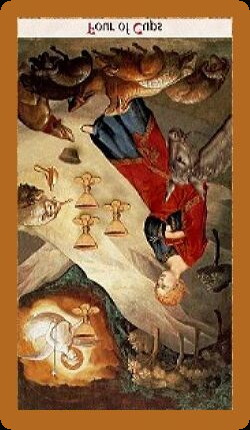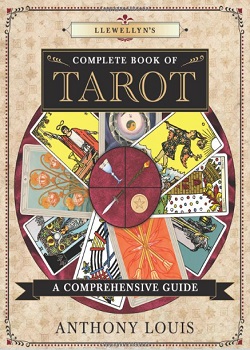Your Chosen Card – Four of Cups Reversed Golden Deck

When reversed, the Four of Cups points to novelty and fresh possibilities entering your life. These may take the form of new acquaintances, new learning, or the setting of new goals for yourself. The inverted Four of Cups may also herald the experience of presentiments, premonitions, and accurate hunches, so keep open to gut feelings and signs from the universe thatmay signal new paths to fulfillment.
Keywords Reversed: Disquiet, feeling unfulfilled, dissatisfaction, weariness, discontent, a missed opportunity, indifference, satiety, cloying of appetites, boredom, disenchantment, stagnation, apathy, lethargy, self-pity, depression, imaginary vexation, lack of motivation, feeling stuck in a rut, problems with health.
Timing: 20 Cancer30 Cancer. Tropical, 12 July21 July. Sidereal, 6 August17 August.
Astrology: The emotional and inconstant Moon (dignified) in the third decan of watery Cancer, realm of the Waite Knight/Thoth Prince of Wands (Air of Earth) and the Chariot (Cancer). The Moon is linked to the High Priestess.
Number Symbolism: 4 – structure, stability, order, logic, foundation, manifestation.
Mathers: Ennui, displeasure, discontent, dissatisfaction; (R) new acquaintance, conjecture, sign, presentiment.
When Four of Cups is reversed you can pretty much take it that life is going well but that’s when life takes us by surprise. If Four of Cups is unclear it may help to choose a card from the Major Arcana to provide more insight into what it is Four of Cups is trying to tell you. If you had a particular issue in mind, or want to seek clarification on something else, you can also choose again to get more guidance.

This chosen card is part of your reversed card reading for Four of Cups using cards from the Golden Tarot Deck. You will find many more tarot pages that will be of great help if you need tarot card meanings. Use the search at the bottom of the page. We have some amazing tarot books for you to browse. Please see below.
Here are some snippets from a few of my favorite books

Book Details
Complete Book of Tarot: The silk cloth myth: always wrap your cards in silk cloth and store them in an oak box with crystals like quartz or amethyst.
Complete Book of Tarot: Author Rami M. Sharpiro, who recounts such Hasidic tales, explains: ‘Humans are storytelling animals Our stories define us, instruct us, create us. Without our stories we do not exist [f]or us our story is our self [a]nd the story you tell determines the meaning you derive from the events of your life.’ 24 The tarot too is a storytelling ritual that allows us to retell and even change our stories in ways that can heal us. Jane Sterns book Confessions of a Tarot Reader illustrates this storytelling approach; she tells real-life tales of a number of her tarot clients to illustrate the archetypal meanings of each of the cards of the major arcana.
- Do get in touch if you looked for Four of Cups and we don’t have it listed. We would be more than happy to source the information for you. We hope you visit again for more online tarot information!
Complete Book of Tarot: Author Rami M. Sharpiro, who recounts such Hasidic tales, explains: ‘Humans are storytelling animals Our stories define us, instruct us, create us. Without our stories we do not exist [f]or us our story is our self [a]nd the story you tell determines the meaning you derive from the events of your life.’ 24 The tarot too is a storytelling ritual that allows us to retell and even change our stories in ways that can heal us. Jane Sterns book Confessions of a Tarot Reader illustrates this storytelling approach; she tells real-life tales of a number of her tarot clients to illustrate the archetypal meanings of each of the cards of the major arcana.